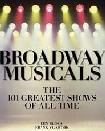SEARCH CurtainUp
REVIEWS
FEATURES
NEWS
Etcetera and
Short Term Listings
LISTINGS
Broadway
Off-Broadway
BOOKS and CDs
OTHER PLACES
Berkshires
London
LA/San Diego
DC
Philadelphia
Elsewhere
QUOTES
On TKTS
LETTERS TO EDITOR
FILM
LINKS
MISCELANEOUS
Free Updates
Masthead
Writing for CurtainUp NYC Weather
The End of the Moon
By Jerry Weinstein
|
This is the hand, the hand that takes/ Here come the planes/They're American planes. Made in America/ Smoking or non-smoking?/ And the voice said: 'Neither snow nor rain nor gloom of night shall stay these couriers/ From the swift completion of their appointed rounds' -
. --- Lyric from "O Superman" (1981) |

Laurie Anderson
|
The song "O Superman" -- which rose to #2 on the British music charts -- was eight minutes long and while this was excessive for a pop song, it was only a fragment of her nearly five hour opus -- United States -- whose four parts -- Transportation, Politics, Money, and Love -- were built on the scaffolding of a classical opera.
Audience-goers to her current work, The End of the Moon,- will immediately notice the intimacy and sparseness of presentation and streamlining of content. Gone is the massive infrastructure of her work: the towering monitors, massive projections, and even vocal manipulations (a vocoder was employed to heighten her androgynous-sounding voice, making its affect all the more eerie). The sets at the Harvey Theater featured a landscape of palm-sized beeswax candles lighting the stage like grounded heavenly starlight. Anderson sat on a hard-backed chair accessorized only by her electric voila, a microphone, and a small scrim that infrequently held images that riffed off her narrative. As she wrote in her artistic statement, "… almost everything has disappeared, turned into software and programs. [E]ventually it will all fit into my pocket."
In February of this year Laurie Anderson -- at fifty-eight now a doyenne of the Downtown scene -- completed her two-year tour of duty as NASA's first -- and last -- artist-in-residence. For her, End of the Moon represented the realization of a life's ambition. While Anderson has been prescient about the role of technology in modern culture -- often inventing forms and techniques to support her art -- here she was given direct access to NASA's Ames Research Center, the Space Telescope Science Institute in Baltimore, and the Jet Propulsion Laboratory.
The evening was less about any tactile findings made during her tenure, than impressions across the continuum of humanity. In discussing the scientific concept of "Dark Energy" (a new theoretical construct that is the obverse of the Big Bang -- a phenomenon that literally threatens to engulf the galaxy), Anderson found an apt metaphor to describe emptiness overwhelming presence -- even existence itself. These musings even bridge science with spirituality - at one point Anderson observes how Buddhists have no interest in ontology. Her example was fittingly architectural and personal: "If your house is on fire, why would you care who the architect was?" A generation after Laurie Anderson first came upon the scene, technology is ubiquitous. If the foundational works of Anderson were in any way didactic, The End of the Moon is economical but no less a polemic. It is, however, stealth in its poetry, immense in implication, and no less prophetic.
While this is being written as the show ends its run at BAM, this is not the end of The End of the Moon. This show will tour through May, 2005. Next date: March 8, University of Nevada/Reno.
|
The End of the Moon Conceived and performed by Laurie Anderson Lighting design: Jennifer Tipton Sound design: Jody Elff BAM Harvey Theater (651 Fulton Street) Ninety minutes without intermission. Feb 22-26, Mar 1-5 at 7:30pm; Feb 27 & Mar 6 at 3pm Reviewed by Jerry Weinstein based on March 3rd performance |

Easy-on-the budget super gift for yourself and your musical loving friends. Tons of gorgeous pictures.

Retold by Tina Packer of Shakespeare & Co.
Click image to buy.
Our Review

At This Theater

Leonard Maltin's 2005 Movie Guide

Ridiculous!The Theatrical Life & Times of Charles Ludlam

6, 500 Comparative Phrases including 800 Shakespearean Metaphors by CurtainUp's editor.
Click image to buy.
Go here for details and larger image.



